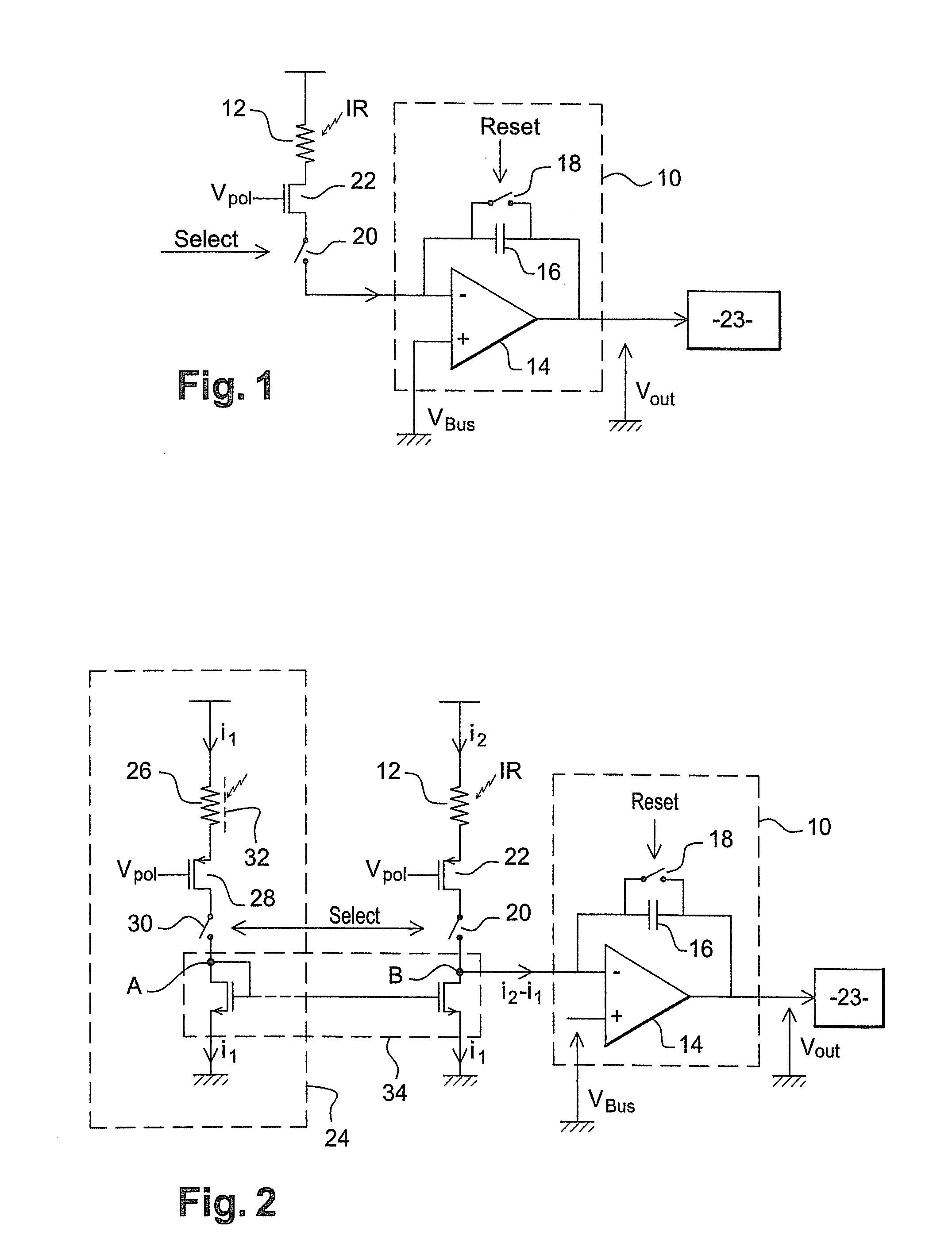Device for the detection of an electromagnetic radiation and electromagnetic radiation detector comprising such devices
a technology of electromagnetic radiation and detector, which is applied in the field of electromagnetic radiation detection devices and electromagnetic radiation detectors, can solve the problems of bolometric detectors, small relative variation of electrical resistance, and detrimental to the quality of infrared radiation detection, and achieve the effect of increasing the complexity of the detector manufacturing process
- Summary
- Abstract
- Description
- Claims
- Application Information
AI Technical Summary
Benefits of technology
Problems solved by technology
Method used
Image
Examples
Embodiment Construction
[0093]An inventive bolometric detector is shown in FIG. 5. As has already been previously described in relation to FIGS. 2 to 4, the detector comprises an array of bolometric pixels 50, each of the pixels comprising an imaging bolometer 12 that has a bolometric membrane sensitive to infrared radiation and suspended above a substrate by means of support and thermal insulation arms. The bolometric membrane is of the semi-conductor type, and comprises amorphous silicon or vanadium oxides for example.
[0094]Each pixel in the array 50 also comprises an MOS transistor 22 and a read switch 20. Each column in the array 50 is associated with a read circuitry 60 produced in the substrate. The circuitry 60 comprises an integrator, constituted by an operational amplifier 14, a capacitor 16 and a reset switch 18.
[0095]The circuitry 60 also comprises a compensation bolometer 62 thermalized in the substrate. For example the compensation bolometer 62 has no support arms and / or is partially or totall...
PUM
 Login to View More
Login to View More Abstract
Description
Claims
Application Information
 Login to View More
Login to View More - R&D
- Intellectual Property
- Life Sciences
- Materials
- Tech Scout
- Unparalleled Data Quality
- Higher Quality Content
- 60% Fewer Hallucinations
Browse by: Latest US Patents, China's latest patents, Technical Efficacy Thesaurus, Application Domain, Technology Topic, Popular Technical Reports.
© 2025 PatSnap. All rights reserved.Legal|Privacy policy|Modern Slavery Act Transparency Statement|Sitemap|About US| Contact US: help@patsnap.com



